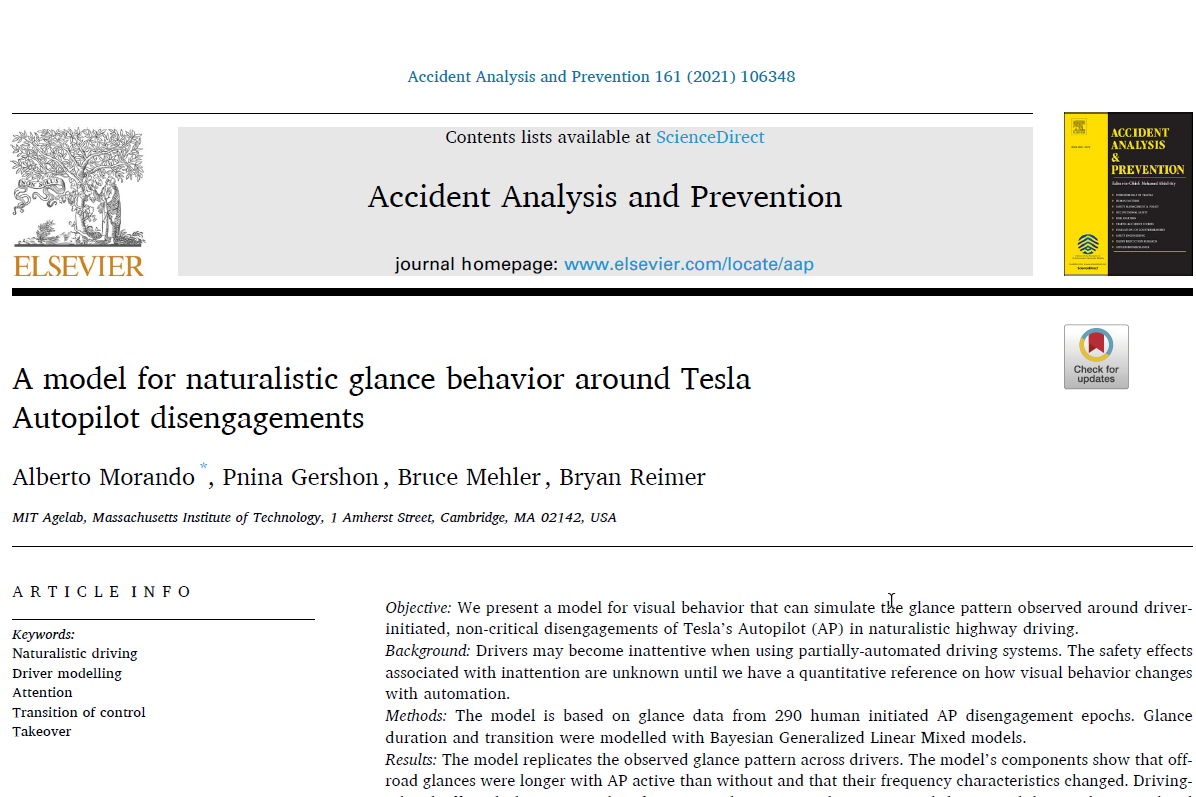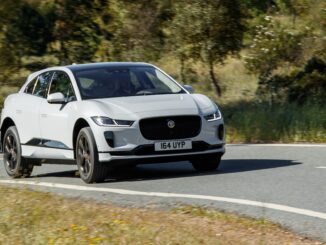TESLA – Based on some real data, MIT has developed a model that looks at how drivers may become inattentive when using Tesla’s Autopilot system.
They found, not surprisingly, that driving related off-road glances (perhaps checking for peripheral hazards, checking your speed etc) were less frequent; while non-driving related glances, were the most frequent and the longest (22% of the glances exceeded 2s).
There is evidence that some driver aids can be helpful – adaptive cruise control has reduced some tailgating.
If drivers are inattentive or have incorrect expectations about system performance, the response to safety relevant situations deteriorates.
They suggest one way to potentially improve drivers’ engagement is with a driver attention management system that can provide feedback to the driver or adapt the way the system reacts in real-time.
TO LISTEN TO THE RADIO REVIEW CLICK BELOW
Like our approach to many transport developments Tesla’s system is driven by what has been technically possible. We need to look at how people use it rather than how we define how it should be used
It has been recently reported that regulators at the NHTSA in the United States had finally opened the long-overdue investigation into Tesla crashes. The NHTSA said the investigation includes Tesla’s Model X, S and 3 for model years 2014-2021. The broad range of models and model years means that this could be the large-scale investigation that many have been requesting for years.
The NHTSA said the investigation would assess technologies, methods “used to monitor, assist, and enforce the driver’s engagement” during autopilot operation, according to Bloomberg.
The NTSB has urged the company to work on the feature’s safety before pursuing Autopilot further. Jennifer Homendy, chairwoman of the National Transportation Safety Board, said: “Basic safety issues have to be addressed before they then expand it to other city streets and other areas.”
Homendy argued that the term ‘full self-driving’ was “misleading and irresponsible”.
This is a Motoring Minute
Im David Brown
Motoring Minutes are heard around Australia every day on over 50 radio channels through the Torque Radio network. Motoring Minute has an average daily audience of over 150,000 listeners. That’s over 750,000 listeners a week
Motoring Minute is also broadcast as part of Overdrive Radio Program, which is broadcast through the Community Radio Network across Australia and has a weekly audience of over 430,000.



